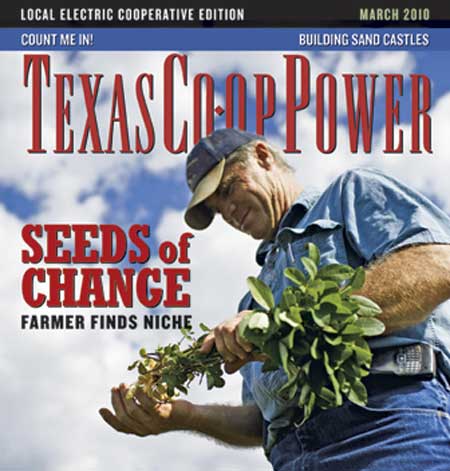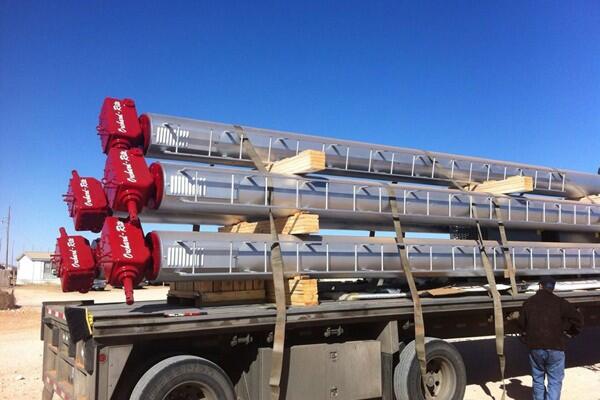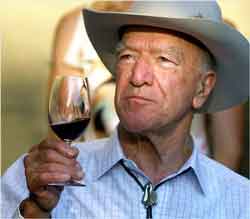
What Are Texas Grape Growers and Winemakers Doing to Build a “Real” Texas Wine Industry?
Or, Who will be the Robert Mondavi of Texas?
It’s been a tough week as a result of the spring freeze that’s hit the high plains and the western and northern parts of the hill country. However, sometimes when it seems darkest, a ray of light appears bringing hope for a better time. Better yet, there is a major meeting of Texas grape growers and winemakers at Newsom Grape Day on May 9th in longtime grape grower Neal Newsom’s barn in Plains, Texas. They will be talking about how the Tempranillo growing regions in Spain compare to those in Texas. Hopefully, there will be side discussions. This blog is to provide some suggestions to attendees on topics that I feel are critical for Texas’s rise as a new and major wine producing region.Who is going to step up and what steps will be taken?
Last weekend, I finally had some time to “tool around” along the Route 290 wine trail, meeting up with some old friends and visit with some new friends at wineries along the way. While the prognosis from the high plains that feeds many of the hill country wineries with grapes to fill out their harvest needs, many have made decisions or are making decisions on how to better make their wineries viable year-in-and-out and generally more sustainable as mainstream business ventures.
I’ve made a list of what I’ve heard from various sources. In most cases, I’ve chosen not to provide quotes since some did not want their names or opinions known particularly since they were still working on their paths forward after last week’s sever freeze. Check them out below…
#1 – Portfolio Management Applied to Wine Grapes
For the hill country wineries this boils down to finding alternative sources of Texas grapes to replace those lost on the high plains from the recent freeze (this year and last, and maybe next year, too). For the second year now, vineyards in central and northeast Texas appear to have fared somewhat better and have grapes to offer. Gulf coast and east Texas growers have grapes to offer, as well, particularly the popular hybrid, Blanc Du Bois. This essentially means applying a wine country equivalent to what financial advisers recommend to do with your retirement money – Share the risk through diversification. Some gamblers hedge bets to accomplish effectively the same thing, too. For wineries, it means contracting more grapes and from different places all around the state. Then, if one place has a freeze or hail, or if a hurricane comes ripping up the middle of the state, they still have only lost a portion of their total grape harvest.
#2 – A Need for More Tank Space
In accomplishing #1 above, this might also mean that wineries need to “over contract” for grapes than what they actually need. This carries a risk, too. In the event of the good harvest year, wineries may have to take more grapes than they can currently handle. Therefore, like in previous good harvest years of 2010 and 2012, tank space at wineries was at a premium and some perfectly good Texas grapes didn’t find a home. What a waste! A winery that has extra tank space or that has relationships with other operations where wine can be properly stored, can set themselves up for a long stable run of wine that can help them offer wine to customers (and other wineries) during the lean years.
#3 – More Wineries Should Offer Multi-varietal Blends Rather than Single Varietal Wines
Some Texas wineries were burned badly in 2013 by not being able to obtain enough of certain grape varieties (and resultant wine) that their customers have grown to expect. Viognier is a prime example. It has become widely recognized as a prime Texas grape variety, but it buds early and is very susceptible to late spring freezes. However, some wineries are learning how to better manage this situation by offering blends of 2, 3 or more grape varieties under a proprietary name. For example, Hilmy Cellars offers a mystery red blend called “Politics & Religion”. Pedernales Cellars has their white blend Vino Blanco and its very interesting new white five-blend Cinco to take up the slack of not having much their famed Viognier. These are only two of many examples. Proprietary blends can provide a reliable year-to-year presence on the tasting room or wine market shelf, but the blend can vary yearly depending on the availability and amount of grapes harvested.

#4 – More Emphasis on Multi-vintage Blends, Too!
This past weekend, I finally heard winemakers talking about making wines made from grapes harvested over more than one harvest. The hesitancy of going this route is mainly from distributors and some snobby sommeliers that fear they can’t sell them. However, in the tasting room, both multi-vintage and multi-varietal blend offer a taste of what Texas is – variable, and a market opportunity. It has this fact-of-life in common with most of European winemaking countries. This is why Champagne is known and accepted as a multi-varietal and often multi-vintage wine. The main difference between the Champagne wine region and Texas is that Champagne has learned to accept this tough fact of life and has also learned to use it to their advantage in the marketplace. Why can’t Texas do it, too?
#5 – Non-Texas Wine and Regional Wine Needs to be Part of the Plan
As a minimum, Texas wine (and wine of any other state too) by federal law needs to contain at least 75% grapes grown within the state. Anything less than that can’t be called Texas wine. One way to handle this is to run and hide under the guise of “For Sale in Texas Only”. This sounds like a special product made in Texas especially for Texans, but it’s not. It is way to legally sell out of state wine to Texans without divulging the source or appellation of origin of the grapes.Hopefully, this approach is finally waning.
There now appears to be a new wave of acceptance of wines from Texas wineries where the sources of the grapes is not Texas, but where the source states or appellations are correctly indicated on the label. In this regard, this past weekend, in addition to Texas wines, I saw and tasted wines from New Mexico, Washington, and California. One more legal alternative is to show a co-appellation which can be done in the case where two regions are contiguous (e.g. Texas and New Mexico). This is one method of getting a critical mass of grapes in a bottle wine that can be marketed as a true regional wine. New Mexico works well for us since both Texas and New Mexico grow excellent quality Italian grape varieties (e.g. Dolcetto and Aglianico and maybe even Nero d’Avola).

#6 – Use Technology & Varietal Selection to Your Advantage
As far as I know, this is the first year where wind machines (those big propeller devices to move air in the vineyard) have been used in vineyards in the hill country and on the high plains. The verdict in both cases (so I hear) were resounding positives. Grapevines that were protected by such devices fared much better than those left to brave the elements on their own. Other Texas vineyards have tried other technologies such as chemical sprays or overhead sprinkler to delay the onset of bud break past the last freeze. The results of these experiments, while positive, appear less successful, but they are getting people thinking about how to beat spring freezes. Another approach in this regard is selecting grape varieties that naturally bud later. Examples are white grapes like Roussanne, Vermentino, and Trebbiano, and reds like Mourvedre and Carignan. This approach perhaps is the ultimate solution if it can buy us another two to three weeks until bud break. Or perhaps, there is another technology yet proven that can be brought to aid Texas grape grower.
I remind everyone that will listen to me of the story about the grape growers on the Normandy coast around Nantes where the Loire River flows into the Atlantic. They have chosen to grow primarily a grape called Melon de Bourgogne and it is the basis for their local wine industry. Why? Well, it was the only grape that remained harvestable during the period of years from the early 1800s called “The Mini-Ice Age”. They learned that it is very hard to fight Mother Nature, and it is important to make adjustments that accommodate the land and climate that they had.
Remember: Texas isn’t Bordeaux and sure as hell ain’t Burgundy. I know, I know, you have heard that before from me. We need to stop expecting Texas to be something else and stop apologizing about the fact that it’s not. As a matter of fact, it isn’t Napa Valley either or like anywhere else.

We need to be looking for ways that will allow Texas wine country to reach its full potential, or borrow old world techniques, or adapt new technologies that can be combined for the same purpose. Texas IS a warm growing region that most of the time as to contend with the “HARD STOP” of the late freezes. Late freeze is currently the single biggest challenge that greatly limits Texas grape and wine production.
Finally, we must keep in mind that most wine growing regions evolved naturally over hundreds, if not thousands of years. Texans need to support their native grape growing and wine industries. Additionally, grape growers and winemakers need to think long and hard (and as creatively as possible) to reach the point where it be commercially viable and economically sustainable year-in-and-out in a truly global marketplace. It looks to me that we may finally have the people in place that can move this initiative forward. Many now in the industry are young and motivated with the opportunity of having 30 or more vintages in front of them to make an impact.

More grapes! More grapes! More grapes!